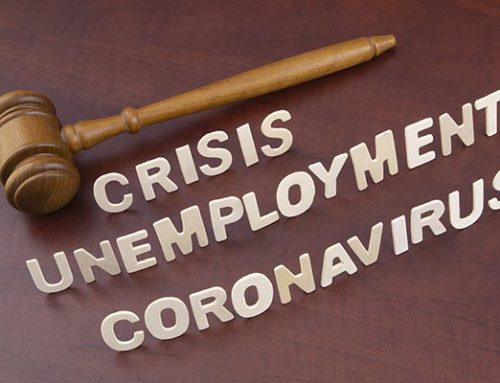The enactment of the Small Business Reorganization Act (“SBRA”) has added a new subsection to Chapter 11 of the Bankruptcy Code, which is being referred to as a Subchapter V. Subchapter V was created to offer small business debtors a faster and less expensive Chapter 11 reorganization path. The Chapter 11 bankruptcy attorneys at Gregory K. Stern, P.C. are available to discuss this new reorganizational option. The SBRA and Subchapter V include many new provisions, but here are some of the key differences between a Subchapter V case versus a regular Chapter 11 case.
- Eligibility
To be eligible for Subchapter V, a debtor (whether an entity or an individual) must be engaged in commercial activity and its total debts — secured and unsecured – must normally be less than $2,725,625. Section 1113 of the CARES Act has increased the debt limit to $7,500,000. The increased debt limit applies to cases filed after the enactment of the CARES Act and is valid for one year after the CARES Act becomes effective (March 27, 2021). Thereafter, the debt limit will be reduced back to $2,725,625. In addition, single asset real estate debtors are ineligible for relief under Subchapter V.
At least half of those debts must come from business activity. The debtor’s principal activity cannot be a single-asset real estate operation. The debtor must elect to proceed under Subchapter V. Otherwise, the regular Chapter 11 rules apply.
- Appointment of Trustee
Under Subchapter V a trustee is appointed to assist the small business debtor’s reorganization and monitor the debtor’s performance and consummation of its plan of reorganization. The Subchapter V trustee does not take possession of a debtor’s assets and lacks the ability to sell those assets. The Subchapter V trustee is more like an advisor and handler — facilitating the development of a consensual reorganization plan, appearing at major hearings, and ensuring that the debtor makes timely payments under the plan. The debtor must pay the Subchapter V trustee.
- The Reorganization Process
Upon filing its bankruptcy petition, the Subchapter V debtor must also file a balance sheet, statement of operations, cash flow statements, and federal tax returns.
The act streamlines small business reorganizations and removes procedural burdens and costs associated with typical corporate reorganizations. The Court will hold a status conference within 60 days after the filing. At least 14 days before that status conference, the debtor must report in writing on the efforts made, and to be made, to get a consensual plan. The debtor must file its plan of reorganization within 90 days from the filing of the case. Only the debtor may file a plan. This is a major difference from a regular Chapter 11 where – if the debtor does not file a plan within a certain period – a Chapter 11 Trustee and creditors or other parties in interest may file a plan.
A Subchapter V debtor is not required to file a disclosure statement that is required in a regular Chapter 11 case. As an alternative to a disclosure statement, the plan must include a brief history of the business operations, a liquidation analysis, and projections demonstrating the ability of the debtor to make the proposed plan payments.
Usually, there will be no creditors’ committee – another cut to reduce the time and expense of the small business reorganization.
- Plan Confirmation
In a regular Chapter 11, creditors vote on a plan. But in Subchapter V, a debtor can confirm a plan even without acceptance or votes by creditors. To do so, the plan must not discriminate unfairly and must be fair and equitable. Creditors must still receive as much under the plan as they would if the debtor were liquidated in Chapter 7. Subchapter V also allows the debtor to contribute all “projected disposable income” to making plan payments for three to five years – much like a Chapter 13 plan. Projected disposable income is everything after expenses to maintain and support the debtor (or a dependent) and expenditures necessary for business operations.
To confirm the plan, the court must find (1) the debtor will be able to make all payments under the plan or (2) there is a reasonable likelihood that the debtor will be able to make all payments under the plan and the plan contains appropriate remedies to protect creditors if payments are not made as proposed.
There are different procedures and consequences if the Plan is considered “consensual” or “nonconsensual.”
- Discharge
With a consensual plan (one agreed to by your creditors), the debtor will receive a discharge at confirmation. Without a consensual plan, the debtor will receive a discharge if he completes all plan payments. All exceptions to discharge under the Bankruptcy Code apply to the small business debtor.
- Miscellaneous
The following are other Significant provisions of SBRA:
- Changes to Absolute Priority Rule – Elimination of the New Value Rule. The act removes the requirement that equity holders of the small business debtor provide “new value” to retain their equity interest in the debtor without paying creditors in full. For plan confirmation, the act instead only requires that the plan does not discriminate unfairly, is fair and equitable and, provides that all of the debtor’s projected disposable income will be applied to payments under the plan or the value of property to be distributed under the plan is not less than the projected disposable income of the debtor.
- Modification of Certain Residential Mortgages. The act allows a debtor to modify the rights of a creditor secured only by the debtor’s personal residence and removes the prohibition against an individual small business debtor’s modifying their residential mortgages. The act now allows an individual small business debtor to modify their mortgage secured by their home if the underlying loan was not used to acquire the residence and was primarily used in connection with the debtor’s small business.
- Preferences. The Bankruptcy Code allows a debtor to recover certain payments made to creditors prior to filing a bankruptcy case. The SBRA imposes a requirement that the debtor must (1) exercise reasonable due diligence under the circumstances “taking into account a party’s known or reasonably knowable affirmative defenses” before filing a preference lawsuit and (2) file the preference suit in the federal district court where the defendant resides if the preference claim is less than $25,000.
- Delayed Payment of Administrative Expense Claims. The act removes the requirement that the debtor pays administrative expense claims – including those claims incurred by the debtor for post-petition goods and services – on the effective date of the plan. Unlike a typical Chapter 11 bankruptcy, a small business debtor may now stretch payment of administrative expense claims out over the term of the plan.
The above is intended to provide a summary of the relevant provisions of the SBRA and does not address or analyze every provision that may impact a debtor’s ability to reorganize under this new act. While the SBRA aims to make small business bankruptcies faster and less expensive, it is still unclear whether this new bankruptcy alternative will yield those results.
It is more important than ever that you contact a law firm whose practice is concentrated in bankruptcy reorganizations, like the Chapter 11 bankruptcy attorneys at Gregory K. Stern, P.C., to help you navigate and understand which bankruptcy option is best for you and your business






